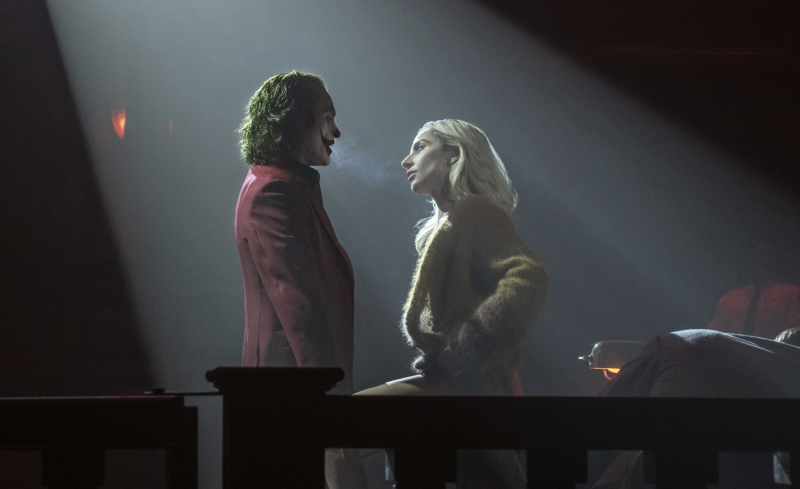That interaction, and others that follow, carries on some of the themes of Joker, which imagined Arthur and the mania that springs from him as the warped product of a cruel urban world and failed social safety net. Arthur is now heading for either the death penalty or life in prison, it’s just a matter of whether his attorney (Catherine Keener) can convince a jury that he suffers from split personality syndrome.
We are again asked to consider and weigh how Arthur is treated by those around him, including the guards who at turns mock him, ask him for his autograph or show him a little compassion. Gotham City district attorney, Harvey Dent (Harry Lawtey), believes he should die for killing five, including the late-night talk-show host Murray Franklin live on air. Does Arthur deserve our sympathy? Folie à Deux is a little like the Seinfeld finale: a moral, courtroom rehashing.
The throngs outside the courthouse clamor not for Arthur but the Joker, who they regard as an anarchist martyr. They crave entertainment, and Arthur, or the Joker, is tempted to give it to them. One psychology expert claims Arthur’s mental illness is “just a show.” In many ways — including a mock Looney Tunes cartoon that opens the movie — Folie à Deux continues the first movie’s interest in considering, and satirizing, what it is we crave in entertainment. Do we want the “real” story of Arthur or the fantasy of the Joker?
I’m not sure Folie à Deux always successfully pegs audience desire, though. What I most wanted in Folie à Deux was for it to stop playing with the concepts of its characters and instead let them breathe a little more on their own. It’s not surprising that the movie works best when Arthur and Lee lock into one other. This is Arthur’s first blush with the love he’s lacked (“She gets me,” he says), but their connection may also have more to do with fantasy. Their time together is actually somewhat limited but, in Arthur’s imagination, their emotions soar in songs, mostly old standards (“Get Happy,” “For Once in My Life,” “That’s Life”), they sing tenderly to one another.


